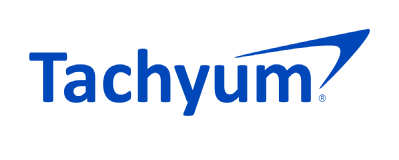Can EU get ahead of Tesla in the automobile industry? Slovakia’s supercomputer could be a perfect fit to achieve this
Self-driving cars have become a reality, with Tesla in the lead by far. With their cars collecting millions of miles daily, it would take many years for EU vendors to catch up. However, Tachyum technology, which could be 10 times faster than Tesla, empowers EU to not only catch up but exceed that number in 2-3 years.
Why is this important? What are the benefits to drivers and passengers?
Let’s look at history that shows that driving cars goes hand in hand with accidents. There are passive and active components to protect passengers in cars with passive ones focused on minimizing accident impact. These include seat belts, air bags and more. Active ones are designed to prevent accidents and make driving safer.
At slow speeds, such as parking, we use ultrasound sensors. In 1987, the Belgian Rudy Beckers invented the parking sensors that are now used in cars all over the world. He invented the sensors so that his wife would no longer have to get out of the car to give him directions while he was parking.
Cameras. More and more vehicles have cameras for all around view. At first, they were used to help parking, later for reading road signs and traffic lights or for lane recognition. More importantly, people and animals can be recognized by cameras in the dark, thanks to infrared technology to improve safety.
Radar. As we know, radar works with electromagnetic signal, so it is best to position distance between vehicles. Radar is mostly fitted in front of the car to work with adaptive cruise control, helping to keep a safe distance between cars in front. The backward-facing sensor records cars approaching from behind and potentially changing lanes to avoid a rear end collision. They are also important when moving in reverse and in parking.
All those sensors were initially used as separate items performing just one function. Nowadays all data from sensors can be interconnecting and processing in real time, resulting in automated motorway driving. Reliability is increasing but drivers still need to pay attention.
Lidar systems for real-time image recognition are the most discussed sensors in the car industry. Some in the car industry see lidar sensors as the future and some do not. Some because of price and some because they feel they can trust cameras which are cheaper and usable with AI (Artificial Intelligence) algorithms that help.
As the sensors are interconnecting, we can see interconnecting cars using WLAN or 5G to match behavior of cars close to each other.
Innovative technology definitely helps to protect passengers and save lives.
AI role in self-driving and why EU behind Tesla
Why is Tesla winning? Tesla is more of an innovative technology company than car manufacturer. They equipped all their cars with camera systems with a vision that create AI algorithms enabling the autonomous driving of the car. Their plan is very simple – they just upload and enable software to do it. All components are already in place.
In fact, what we see today is Tesla doing some adjustments in their plan uploading only software is not difficult, but their dream becoming reality. Tesla’s marketing KISS (Keep It Simple Stupid) works. While their customers may not understand all the technologies involved, but appreciate the advantages they get and believe in the dreams of Elon Musk.
In general, we can say that machine learning algorithms make it possible. Today most of electrical vehicles (EV) or other cars with driving assistance have cameras and lots of sensors. They can record driving in real time. Machine learning needs this recording for learning. This is how Tesla does it. In the EU we have GDPR and it is no problem for computers to anonymize the recordings. The more video and sensor recordings, the better algorithms we will get.
How Slovakia and Tachyum could help
A supercomputer, which could be built in Slovakia with Tachyum Prodigy® chips is 10 times faster that Tesla has today and speeds up AI technology working over recordings. In the EU there are more car manufacturers other than Tesla being sold at the same level as Tesla or even better. In addition, EU car makers have the advantage of learning from Tesla.
Autonomous driving is perceived by society as a system that drives the same as a human driver. But this is not the case. The goal is to drive better and safer than a human. Most accidents happen because of human error. The driver is tired, drunk, not paying enough attention, does not have enough experience, or has overvalued his driving abilities. Computers will never have these problems. We can expect that these systems will get better and better and have even more advantages. We just need to continuously train the systems via AI as much as we can, and they will constantly improve.
Moreover, computers can focus with the same quality in many directions via cameras or sensors. A human driver can’t. The next level will car intercommunication. Vehicles will know about each other dynamically within a 1 km range and optimize the drive. Just imagine how many accidents will be avoided if we were able to see 4 or 5 cars in front of us.
Tachyum technology could be used to process all this data. Slovakia’s supercomputer is the perfect fit. As mass production of these chips hits the market, car makers can procure their own supercomputers.
With this achievement coming, we can be sure that future will be better. What the EU needs is a powerful AI system, and Slovakia and Tachyum can enable it.

